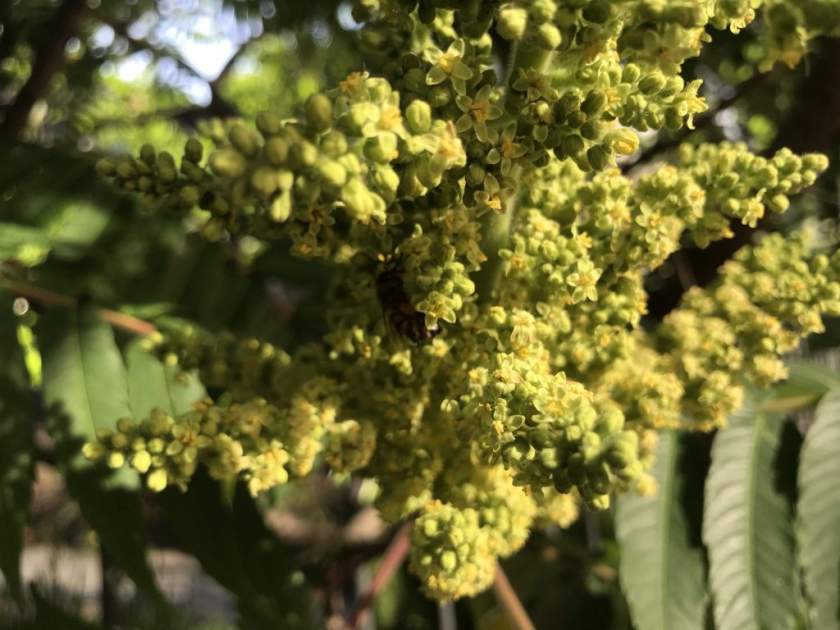Rhus glabra: Exploring the Intriguing Scarlet Sumach
Background and Characteristics: In our journey through life, we encounter a fascinating array of plant varieties, each with its own unique qualities and surprises. One such discovery is Rhus glabra, also known as Scarlet Sumach, Upland, Pennsylvania Sumach, Vinegar Tree, or Smooth Sumach. While the name “Sumach” is associated with a shrub or a family of plants, it is important to note that the spice derived from dried fruits is obtained from different species of Rhus, not from Rhus glabra.
Description and Usage of Spice Sumach:
Sumach spice, derived from the dried fruits of Rhus coriaria, is a sour reddish-purple powder widely used in Middle Eastern cuisine. It adds a distinctive tangy flavor and is often sprinkled on dishes such as Hummus and Tashi. Sumach is a key ingredient in falafel, and Persians traditionally include it in their Chelo-Kabab. However, in North America, Rhus glabra is used to make a beverage with a flavor similar to lemonade.
Distinguishing Poisonous Species of Rhus: It is crucial to be aware that certain species of Rhus are poisonous. Non-poisonous varieties can be distinguished by their fruit, which is adorned with acid crimson hairs and compound, dense panicles. On the other hand, poisonous species bear smooth fruits and axillary panicles. Some well-known poisonous species include Rhus Toxicodendron (Poison Ivy), Rhus diversiloba (Poison Oak), and Rhus vernix (Poison Sumach). These plants contain urushiol, a substance that triggers allergic reactions in humans.
Origins and Appearance: Rhus glabra is native to North America and is highly resilient, with the ability to tolerate frosts as low as -20°C (-4°F). As a clump-forming deciduous shrub, it propagates through suckers and belongs to the Anacardiaceae family of plants. The bark of Rhus glabra is grayish, while the bluish-green pinnate leaves add to its aesthetic appeal. During early summer, the shrub produces yellowish-green flowers, and in autumn, the leaves transform into vibrant shades of yellow and red.
Cultivation of Rhus glabra:
Sunlight and Soil: Rhus glabra thrives in full sun but can also tolerate partial shade. It is adaptable to various soil types, provided they are well-drained.
Size and Pruning: This shrub can reach a height of up to 2.5 meters (8 feet) and can spread as wide as its height. To maintain its shape, annual pruning is recommended. Proper pruning techniques can help control the size and ensure a more compact growth habit.
Propagation: Rhus glabra can be propagated through wood cuttings or root cuttings, preferably in autumn. This method allows for the successful reproduction of the shrub.
Fruit Production:
Rhus glabra exhibits dioecious characteristics, meaning that male and female plants bear separate flowers. The fruits, which appear exclusively on female plants, emerge in clusters and possess a reddish color. Covered in a sour-tasting crimson down containing malic acid, these fruits should be harvested before rainfall or any water contact to preserve their acidity.
Other Uses: Apart from its culinary and ornamental value, Rhus glabra has other practical applications. The leaves of this shrub are rich in tannins, making them suitable for use in leather tanning processes. Additionally, the bark of Rhus glabra can be utilized for dyes, adding natural color to fabrics and textiles. Medicinally, Rhus glabra is also employed in various traditional remedies.
Medicinal Uses:
In traditional medicine, Rhus glabra has been utilized for its therapeutic properties. It has been reported to have anti-inflammatory and antimicrobial effects. The plant has been used to treat ailments such as diarrhea, fevers, sore throats, and respiratory issues. However, it is important to consult with a healthcare professional before using any plant for medicinal purposes.
In conclusion, Rhus glabra, or Scarlet Sumach, is a captivating shrub with a range of uses and attributes. From its distinctive spice namesake to its vibrant appearance and practical applications, this native North American plant continues to intrigue and enchant nature enthusiasts and researchers alike. Its hardiness, ease of cultivation, and versatile nature make it a valuable addition to gardens, landscapes, and even culinary adventures.







